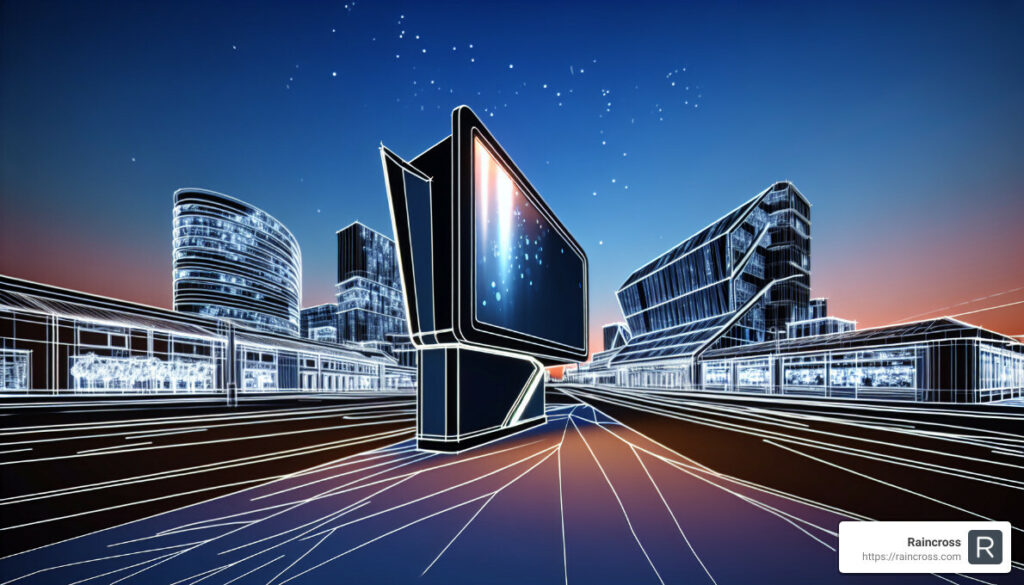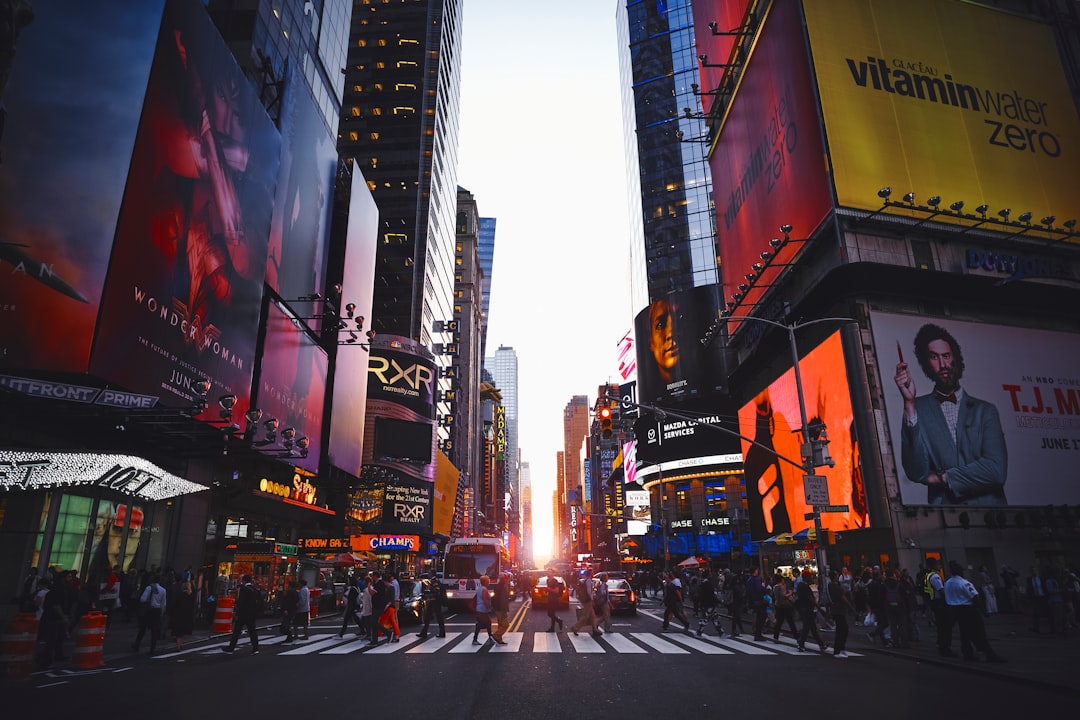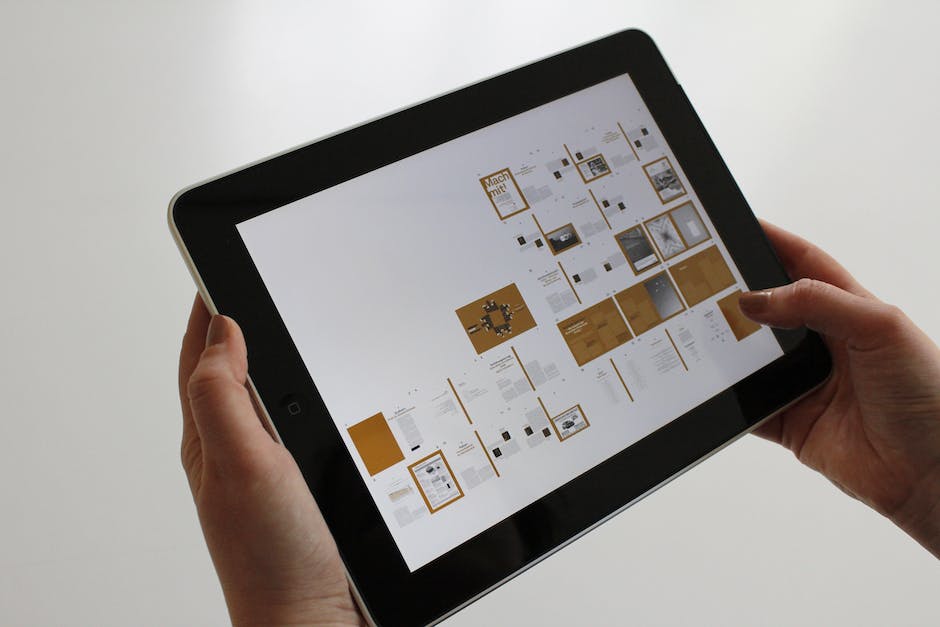Feeling left out in the rapidly shifting landscape of advertising? Welcome to the constantly evolving world of advertising: the digital age is upon us, tilt-shift lenses have given way to LEDs, and static vinyl billboards are sharing the stage with dynamic digital screens. Meet Digital Out-of-Home advertising (DOOH), the tech-savvy counterpart of traditional outdoor advertising.
DOOH integrates technology with outdoor media, allowing your brand story to be woven into the world in real-time. However, it’s not just about Times Square’s dazzling billboards. Extend your thinking: there are hundreds of thousands of opportunities for outdoor advertising, from visually striking displays to strategically positioned advertising screens. DOOH is all about making an impact wherever your audience goes.

The simple definition for DOOH is this: DOOH is the digital version of outdoor advertising, deploying digital technologies to offer comprehensive targeting capabilities, real-time and contextual advertising, leading to increased ad engagement and providing reliable metrics for measuring the ad’s impact. It’s not just standard digital billboards, but it includes place-based displays, instore media, and even screens at stations and airports.
Our upcoming guide will walk you through a detailed exploration of the DOOH landscape: its evolution, differences from traditional outdoor advertising, how it works, its advantages, practical examples, and what the future holds for DOOH.
Stay tuned, as we unravel the potential of DOOH to be more than just an eye-catcher, but a tool for driving business results and making impressions that stick. Let’s dive in!
Understanding the Difference Between DOOH and OOH
Before we proceed, it’s critical to understand the difference between DOOH and OOH advertising. Both are forms of out-of-home advertising, but they differ significantly in terms of their functionality and appeal.
Traditional OOH Advertising: An Overview
Traditional Out-of-Home (OOH) advertising refers to the conventional forms of outdoor advertising that you encounter daily. This includes billboards, banners, posters, transit ads, and other physical forms of advertisement. OOH advertising is printed on paper or created using other tangible materials and relies on physical visibility to convey its message.
DOOH Advertising: The Digital Revolution in Outdoor Advertising
On the other hand, we have Digital Out-of-Home (DOOH) advertising, which is essentially the digital version of OOH advertising. DOOH utilizes digital technology to display dynamic promotional content such as videos, animations, and brand advertisements. It only exists within the screen displaying it and relies on an internet connection to function.
DOOH is far more interactive and engaging compared to traditional OOH advertising. DOOH content can be updated or altered in real-time, allowing for timely and relevant messages. For instance, a DOOH ad can display a “Happy Hour” offer at a bar during specific hours of the day and switch to another promotional message at other times.
Furthermore, DOOH provides precise targeting capabilities, making it possible to reach the right audience at the right time. The use of technologies such as geolocation, tracking, and retargeting enhances its targeting precision, thus improving its effectiveness.
DOOH is rapidly becoming the preferred choice for many advertisers due to its flexibility and advanced features. This doesn’t mean traditional OOH advertising is obsolete. Both forms of advertising can be used in tandem to create a comprehensive outdoor advertising strategy.
In the next sections, we’ll delve deeper into DOOH, exploring how it works, its advantages, and how businesses like ours at Raincross can leverage it for maximum benefit.
Exploring the DOOH Platform: How it Works
As we continue our journey into DOOH, let’s take a closer look at the platform itself. At Raincross, we believe understanding the inner workings of DOOH is crucial for anyone looking to leverage this powerful advertising medium.
The Role of AdTech in DOOH
Digital Out-of-Home advertising thrives on the integration of advertising technology, or AdTech. AdTech is the backbone of DOOH, enabling the delivery of targeted and contextually relevant ads to specific audiences at the right time.
In the early days of DOOH, ad placements and purchases were manually arranged. However, with the evolution of programmatic advertising, the process has become automated and much more efficient.
Programmatic advertising involves the automated buying and selling of online ad space through real-time auctions. This technology allows for more precise targeting, greater efficiency, and improved measurement of ad performance, transforming the way DOOH operates.
In recent years, artificial intelligence (AI) has also played a significant role in the evolution of programmatic advertising. AI has the ability to analyze huge amounts of data and optimize ad campaigns, automating many of the processes involved, from bidding to targeting and creative optimization. This level of automation and precision was simply unimaginable in the era of traditional OOH.
DOOH also intersects with other emerging channels like OTT (Over The Top) and Connected TV, allowing advertisers to reach audiences in new contexts and environments. At Raincross, we are constantly exploring these innovations to drive better results for our clients.
Formats of DOOH: From Large Screens to Point-of-Purchase Displays
DOOH is far from being a one-size-fits-all approach. There’s a multitude of formats to choose from, and the best choice depends on your specific objectives and target audience.
Large Format Screens: These are ideal for high-traffic areas, capturing the attention of consumers on the move. They come in various shapes and locations, including highway billboards, urban panels, and bus shelters. These platforms create memorable moments, leaving a lasting impression among consumers.
Place-Based Media: These are strategically positioned screens integrated into the consumer journey, in places like shopping malls, restaurants, and elevators. They offer local businesses the opportunity to reach consumers in a more personal and contextually relevant manner.
At Raincross, we work closely with our clients to determine the most effective DOOH format for their specific needs, ensuring they reach their target audience in the most impactful way possible.
In the following sections, we’ll discuss the many advantages of DOOH advertising and share some practical examples to show how businesses are harnessing the power of this dynamic platform. So stay tuned!
The Advantages of DOOH Advertising
DOOH advertising brings a host of benefits, from precise targeting to real-time messaging, increased engagement, and reliable metrics. Let’s delve into what these advantages mean for your brand.
Precise Targeting Capabilities: Reaching the Right Audience
One of the most impressive features of DOOH is the ability to reach specific audiences based on numerous factors. Unlike traditional OOH, DOOH uses data-driven strategies to target audiences. This includes purchase data, mobile app usage, business demographics, and even TV viewership patterns.
Imagine being able to target consumers based on their past purchases or the apps they frequently use. This level of precision allows for more personalized, relevant ads, leading to higher engagement and conversion rates. In fact, 85% of global ad executives expect DOOH ad spend to increase in the coming years due to its unparalleled targeting capabilities, according to a report commissioned by Alfi.
Real-Time and Contextual Advertising: The Power of Timely Messages
DOOH also excels at delivering real-time, contextual advertising. Through dynamic creative, DOOH can automatically adjust ad content based on real-time circumstances. For instance, your ad might display the nearest store location, live sports scores, local weather conditions, or even the day of the week.
This ability to adapt content to the audience’s immediate surroundings enhances the relevance and resonance of your ads. According to a study by JCDecaux, contextually relevant advertising significantly boosts ad awareness, brand recall, foot traffic, and sales.
Increased Ad Engagement: Capturing Audience Attention
DOOH is excellent at grabbing attention and engaging audiences. With eye-catching visuals on large screens in high-traffic areas, DOOH ads are hard to overlook. The adaptability of digital formats also allows for creative experimentation, enabling brands to deliver memorable content that resonates with consumers. In fact, a 2022 report by the Out of Home Advertising Association of America (OAAA) found that over half of city dwellers are noticing more OOH messaging today than they were pre-pandemic.
Reliable Metrics: Measuring the Impact of DOOH
Here at Raincross, we understand the importance of data. That’s why one of the key benefits of DOOH advertising is its ability to provide clear, precise metrics. DOOH offers comprehensive data analytics for your campaign’s performance from start to finish. You’ll gain insights into impressions, market and venue type, data costs, and revenue tracking.
With DOOH, you get more than just broad demographic estimates – you get actual numbers. By analyzing how people who saw the ads behaved compared to those who didn’t, you can measure the true impact of your campaign.
In conclusion, DOOH advertising offers a host of advantages that can help your brand reach the right audience, deliver timely messages, engage consumers, and measure campaign performance effectively. It’s this unique blend of benefits that makes DOOH a highly attractive advertising medium for businesses today.
Practical Examples of DOOH Advertising
Now that we’ve shed light on what DOOH advertising is and its advantages, let’s bring this to life with some practical examples. These examples will showcase how DOOH operates in real-world scenarios and how it can effectively target and engage audiences.
Digital Billboards: The New Face of Street Advertising
We’ve all driven past traditional billboards on the highway or seen them towering over city streets. But the new face of street advertising is digital billboards. These digital displays are versatile, dynamic, and capable of displaying animated or interactive content.
For instance, take the famous example of Times Square in NYC. The entire square is a spectacle of DOOH advertising in action, with large digital billboards displaying eye-catching animations, videos, and brand advertisements.
These digital billboards offer a level of flexibility that traditional billboards can’t match. They can be updated in real-time without any physical effort, allowing companies to display different ads at different times of the day or switch out creative quickly in response to real-time events or audience feedback.
Outdoor Displays in Public Spaces: Restaurants, Malls, and More
DOOH advertising isn’t just limited to digital billboards on the streets. It also includes outdoor displays in public spaces, like restaurants, malls, gas stations, and other high-traffic areas.
For example, you might see digital screens on bus shelters, engaging commuters while they wait for their bus. Or take the case of shopping malls, where kiosks provide easy access to many target demographics, including suburban consumers. These displays can show advertisements, promotional offers, or even interactive content.
An interesting case of this is CVS’s digital ad social media campaign that encouraged users to upload their unedited selfies with the hashtag #BeautyUnaltered. These selfies were then displayed on digital signage in New York’s Times Square, making the campaign interactive and engaging for the audience.
Moreover, DOOH advertising also extends to digital screens in point of care facilities, where medical ad content can be displayed for patients waiting to see their healthcare providers.
In these ways, DOOH advertising is revolutionizing the way brands reach consumers, turning the entire world into a potential advertising platform.
As we at Raincross know, the key to successful DOOH advertising is understanding your audience and leveraging technology to deliver timely, engaging content. Whether it’s through digital billboards or outdoor displays in public spaces, DOOH is paving the way for innovative, effective advertising.
The Future of DOOH: Trends and Predictions
As we look ahead, DOOH is showing no signs of slowing down. In fact, the DOOH market is projected to expand by a whopping 10.35% by 2026, thanks to its precision, effectiveness, and automation. Two major trends are driving this growth: the rise of retail media and contextual targeting, and ongoing technological innovations.
The Rise of Retail Media and Contextual Targeting
Retail media is fast becoming a key component of digital advertising, with brands seeking to engage consumers during their shopping experiences. DOOH plays a crucial role in this trend, enabling brands to deliver hyper-targeted messages based on location and interests.
Unlike online advertising, which relies heavily on third-party cookies, DOOH uses contextual targeting to reach audiences. This means your ads are displayed in contextually relevant environments, delivering the right message to the right group of consumers at the right time. As the marketing landscape moves towards a cookieless future, DOOH’s ability to provide contextual targeting is a significant advantage.
Technological Innovations: What to Expect in DOOH
The future of DOOH is also closely tied to technological advancements. One key area of innovation is dynamic creatives. This feature uses data to automatically change elements within an ad, aligning your message with the audience’s current circumstances. For instance, ads can display the nearest store location, live sports scores, current weather conditions, and even countdowns to product launches.
The rise of connected TV (CTV) in programmatic advertising is another trend to watch. With over 40% of programmatic ad spending shifting to CTV in 2023 and expected to grow by nearly 18% in 2024, DOOH advertisers can leverage CTV’s cookieless nature to create comprehensive omnichannel experiences.
Additionally, increased concerns over digital ad waste, including bot traffic and ad fraud, are leading to a push for more efficient and sustainable advertising practices. By focusing on quality placements and audience-aligned creatives, DOOH can deliver high-quality impressions while minimizing environmental impact.
In conclusion, the future of DOOH is bright, characterized by continuous growth, increased contextual targeting, and technological innovation. As we at Raincross have seen, DOOH is not just about catching eyes, but about making moments that stick, driving business results, and shaping the future of outdoor advertising.
Conclusion: Why DOOH is the Future of Outdoor Advertising
As you’ve seen in our guide, DOOH, or Digital Out-of-Home advertising, represents a significant shift in the landscape of outdoor advertising. It’s not just about moving images on digital screens replacing static billboards. The real revolution lies in its ability to deliver precise, targeted, and timely messages to the right audience at the right time, in a way that traditional OOH advertising simply can’t match.
DOOH allows marketers to create contextual advertising campaigns that target specific audience groups based on their location and interests. This means your message is seen by the people most likely to engage with it, without invading their privacy. The use of digital screens in relevant environments ensures that your message is seen at the right times and in the right context. This level of precision in targeting is a game-changer in outdoor advertising.
But DOOH isn’t just about the here and now. It’s a future-focused medium. By 2026, the DOOH market is expected to grow by 10.35%. This growth is driven by advances in technology and the increasing use of artificial intelligence (AI) to optimize ad campaigns. AI enables marketers to automate many of the processes involved in DOOH advertising, including bidding, targeting, and creative optimization.
Further into the future, we can expect to see an increase in ad experimentation, as more data becomes available. This will allow us to test different ad formats, messaging, and creative elements to find the most effective combination for specific target audiences. As the digital advertising landscape continues to evolve, DOOH will undoubtedly continue to adapt and innovate to stay ahead of the curve.
From the business perspective, DOOH is a powerful tool for driving business results. It allows businesses to quickly change and optimize their media, supply more content, and gain valuable insights into the demographics of their audience. From the consumer perspective, DOOH enhances the outdoor advertising experience, making it less intrusive and more engaging.
In conclusion, DOOH is more than just the future of outdoor advertising – it’s the future of advertising, period. It’s a powerful, effective, and innovative medium that allows businesses to reach their audience in new and exciting ways. At Raincross, we are excited to be part of this future and look forward to helping businesses navigate this new landscape.
But don’t just take our word for it. Take a look at our Digital Marketing Articles for more insights into digital advertising, or contact us today to find out how we can help you harness the power of DOOH for your business.







About The Author: Mysti French
Mysti French is a rockstar content writer! Before joining Raincross, she wrote and developed site content for such sites as Organize.com, MonkeySports, Marketing Instincts and Brenner-Feidler.
Mysti grew up in San Diego before moving to Perris, CA. She graduated from Cal State Hayward (later changed to Cal State East Bay) with a BA in English and Political Science.
More posts by Mysti French